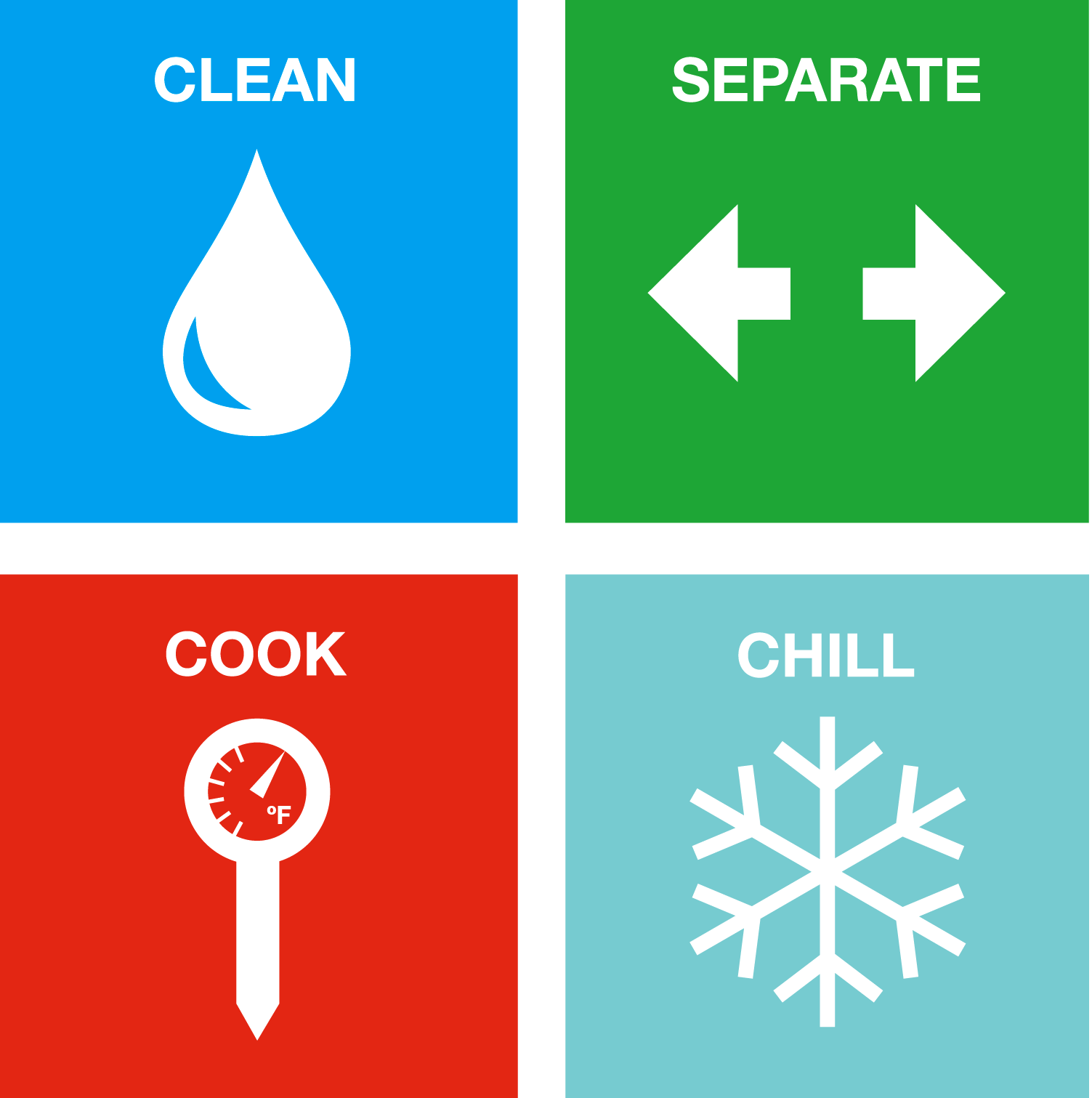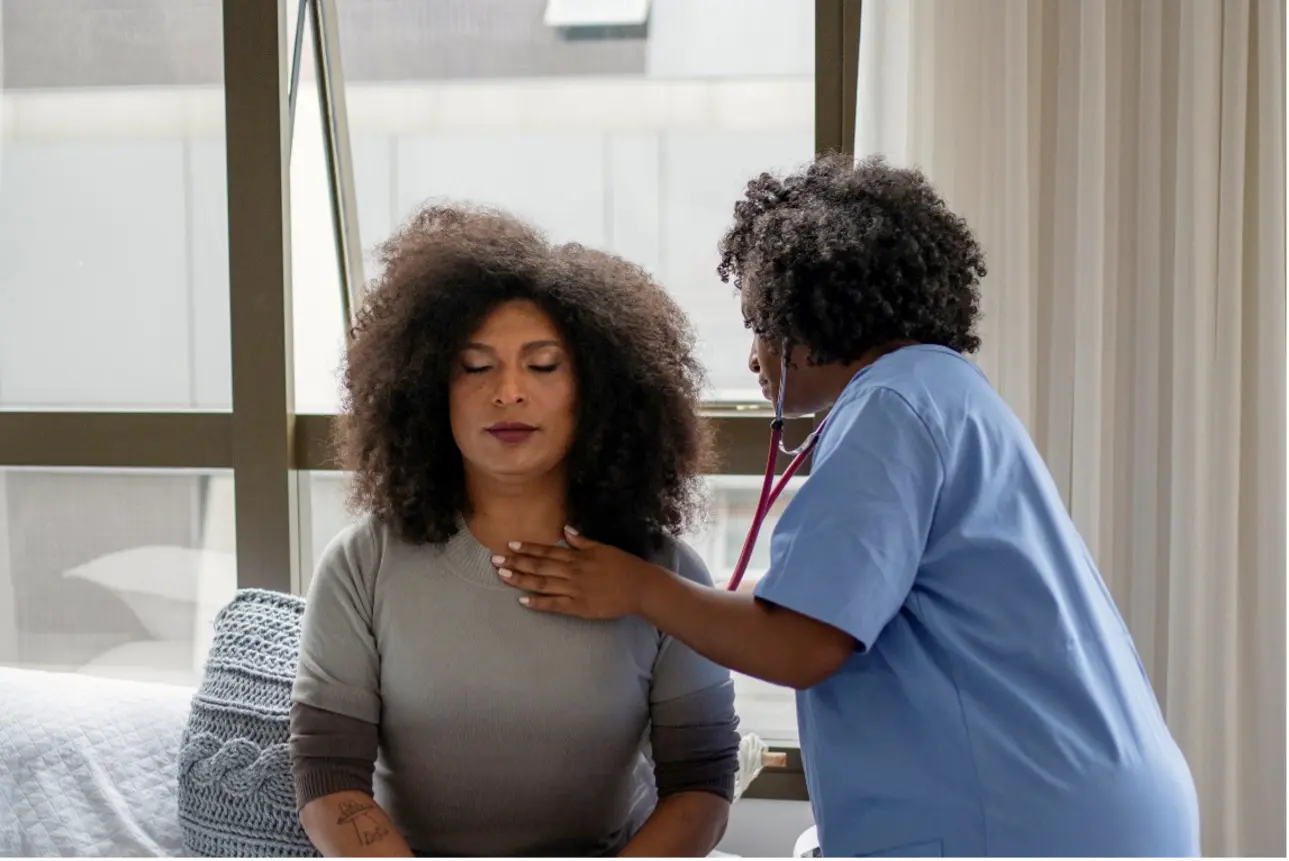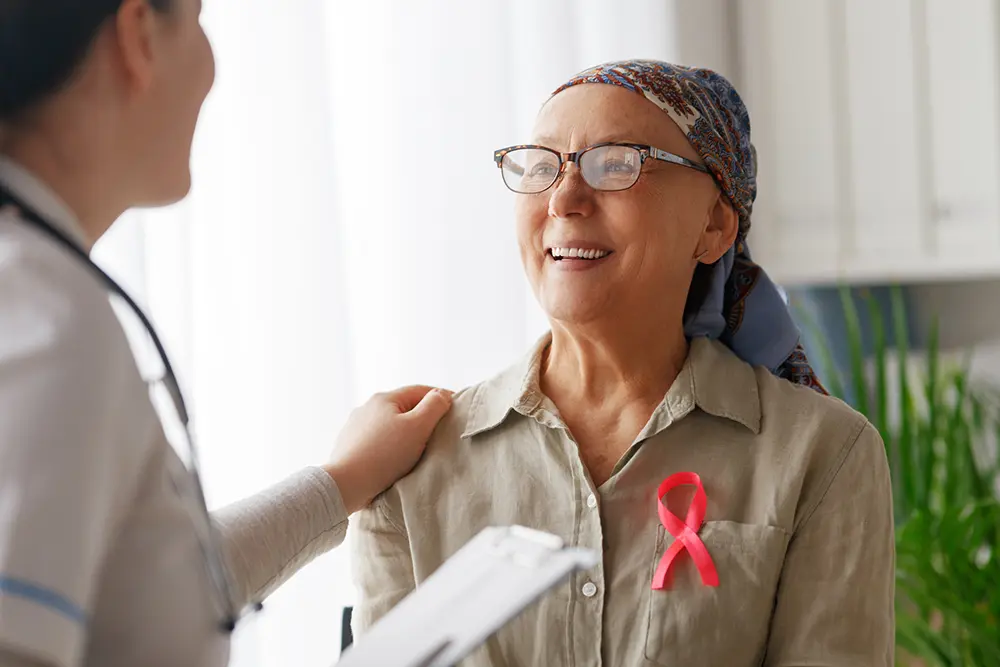by Tracie Swearingen, RD, CSO, LD
One of a cancer patient’s first questions to the Dietitian or their provider is, “Do I need to avoid any foods during my treatment?” In general, there are few foods cancer patients need to avoid. However, following safe food handling and food preparation guidelines, and avoiding foods high in risk for foodborne illness should be practiced.
According to the Centers for Disease Control and Prevention, 48 million people get sick, 128,000 people are hospitalized and 3,000 die from foodborne illness and infection in the US each year (1). Chemotherapy, radiation therapy, surgery, stem cell or bone marrow transplant, steroids, or the cancer itself can suppress or weaken a person’s immune system. Cancer treatment can lower the number of white blood cells (WBCs) and other immune system cells, which can cause these cells to not work as well as they should (2). Neutrophils are a type of white blood cell. Patients often have their absolute neutrophil count (ANC) checked by their provider during their cancer treatment. The ANC is normally greater than 2,000/mm3 (3). An ANC less than 1,000 means that you have a low number of neutrophils and your immune system is weak. This low neutrophil count is called neutropenia (2).
Having a weakened immune system requires patients to make sure they follow good food safety practices to prevent foodborne illness or infection. The risk of a lengthier illness or requiring hospitalization is higher in cancer patients. This could also lead to cancer treatment delays if an illness occurs.
Salmonella is one example of a bacterial infection. It is estimated to cause 1 million foodborne illnesses in the United States each year. This results in 19,000 hospitalizations and 380 deaths (5). It can be caused by eating raw or undercooked eggs, poultry or meat, unpasteurized milk or juice, cheese, seafood, fresh fruits and vegetables. Symptoms of diarrhea, fever and abdominal cramps can begin 12-72 hours after infection and can last 4-7 days. People with weakened immune systems are more likely to have severe infections.
 Four basic steps to food safety: (1)
Four basic steps to food safety: (1)
1. Wash hands and surfaces often.
- Wash hands with warm, soapy water for 20 seconds before and after preparing food and before eating.
- Use paper towels to clean up kitchen surfaces, instead of reusing rags or sponges, which can harbor bacteria.
- Clean the lids of canned foods before opening.
2. Don’t cross contaminate.
- Store raw meat sealed and away from ready to eat food.
- Use a different cutting board for cutting raw meats and ready to eat foods, such as fruits and vegetables. Clean cutting boards with hot soapy water, clean in the dishwasher or use a solution of 1 part bleach and 10 parts water.
- When grilling, always use a clean plate for cooked meats.
3. Cook to Safe Temperatures (1)
Use a food thermometer to ensure meat, poultry, seafood or egg dishes are cooked to safe temperatures.
- Ground beef, pork, veal, lamb – at least 160 degrees
- Whole or ground turkey, chicken and duck – at least 165 degrees
- Fully cooked hams from a USDA inspected plant – reheat to 140 degrees
- Fully cooked hams from any other location or leftover ham – reheat to 165 degrees
- Seafood – to 145 degrees; shrimp, lobster and crab – until they turn red and flesh is pearly opaque; clams, mussels and oysters – until shells open (If they do not open – do not eat)
- Eggs – cook until yolks and white are firm. Egg dishes – until heated to 160 degrees.
- Raw beef, lamb, pork and veal steaks, roasts and chops – to 145 degrees with a 3 minute rest time after removal from heat.
- Sauces, soups and gravy – boil when reheating.
- Leftovers – heat to 165 degrees
- Hot dogs, luncheon/deli meats, bologna – until steaming hot or 165 degrees.
4. Refrigerate food promptly to reduce bacterial growth
- Keep your refrigerator temperature to 40 degrees or below and your freezer to 0 degrees or below. This is one of the most effective ways to prevent foodborne illness.
- Refrigerate perishable food items within 2 hours of cooking or purchasing. Refrigerate within 1 hour if the outside temperature is above 90 degrees.
- Do not thaw foods at room temperature. Thaw in the refrigerator or in the microwave. If thawed in the microwave, it must be cooked immediately.
- Refer to the USDA-FDA Cold Storage Chart for guidelines to keep your refrigerated foods safe to eat. http://www.fda.gov/downloads/Food/FoodborneIllnessContaminants/UCM109315.
- Purchase and use foods that are not past their “sell by” date.
- “Sell-By” notes how the long the store can display the product for sale. Buy before this date expires.
- “Best if used by” is recommended for best flavor or quality. It is not a safety date.
- “Use-by” is the last date recommended for use of the product while at peak quality.
Current recommendations on how to prepare certain foods or foods not recommended during cancer treatment are listed below (4). The foods to avoid are those with a higher risk for foodborne illness. Also refer to the basic food safety recommendations above. You can still eat out during cancer treatment, but avoid eating from high-risk food sources, such as salad bars, delis, buffets, potlucks and sidewalk vendors.
Meat, poultry, fish, tofu and nuts
- Cook meat thoroughly to appropriate temperatures.
- Refrigerated tofu – cut into 1 inch cubes or smaller and boil 5 minutes in water or brother before eating or using in recipes. Not necessary for shelf stable tofu.
- Avoid raw or not cooked to appropriate temperature fish, shellfish, lox, sushi or sashimi
- Avoid raw nuts or fresh nut butters. Use shelf stable nut butters
Eggs
Cook eggs until solid, not runny. Avoid raw/soft cooked eggs.
- Use pasteurized eggs if needed.
- Avoid foods/beverages prepared with raw eggs. Example – raw cookie dough or homemade mayonnaise.
- Throw eggs with cracked shells.
Milk and dairy products
- Only use pasteurized dairy products.
- Avoid soft, mold-ripened or blue veined cheeses, such as Brie, Camembert, Roquefort, Gorgonzola and blue cheese
- Avoid Mexican style cheese if made from unpasteurized milk, such as queso blanco fresco.
- Don’t eat yogurt and ice cream from soft-serve machines.
Bread, cereal, rice and pasta
- Do not purchase out of self-service bulk bins. Prepackaged items are safe to eat.
Fruits and vegetables
- Fresh fruits and vegetables are safe to eat, but must first be washed thoroughly with water. Wash all bagged items, even if they state they are prewashed. You do not need to use soaps or detergents. Fresh fruits and vegetables can come in contact with harmful bacteria in the soil or water where the produce grows. It can also become contaminated after it is harvested, during storage or preparation.
- Throw away fruits and vegetables that are slimy or moldy.
- Avoid “fresh squeezed” juices in restaurants 6.
- Do not buy produce that is pre-cut for you at the grocery store.
- Avoid fresh salsas and salad dressings in the refrigerated section of the grocery store. Choose shelf stable versions.
- Avoid raw vegetables sprouts, such as alfalfa, radish, broccoli or mung bean sprouts.
Desserts and sweets
- Avoid unrefrigerated, cream filled pastries.
- Avoid raw honey or honeycomb. Choose commercial, grade A, heat treated honey.
Water and beverages
- Drink city water or commercially bottled water. If you have well water, please contact the city to have it checked to ensure safety before drinking it.
- Avoid drinking water from lakes, rivers, etc.
- Avoid unpasteurized fruit and vegetables juices. If making your own smoothies – be sure to wash your fruits and vegetables first and drink the smoothie right after preparation.
- Do not drink Sun tea. Use tea bags instead.
A foodborne illness often presents itself with flu-like symptoms, such as nausea, vomiting, diarrhea or fever. Contact your healthcare provider if this should occur. These may also be symptoms of your cancer treatment, so it is important to keep in contact with your provider and let them know the symptoms you experience. If you have any food safety questions, you can contact the Dietitian at your clinic or you can also contact the FDA Food Information Line at 1-888-SAFEFOOD.
References
- Food Safety – For People with Cancer. U.S. Department of Agriculture, Food and Drug Administration. September 2011.
- http://www.cancer.org/treatment/treatmentsandsideeffects/physicalsideeffects/infectionsinpeoplewithcancer/infectionsinpeoplewithcancer/infections-in-people-with-cancer-low-w-b-c-and-weak-immune-sys. Accessed 4/19/16
- Food Safety handout. Academy of Nutrition and Dietetics - 2013.
- http://www.cancer.org/treatment/survivorshipduringandaftertreatment/nutritionforpeoplewithcancer/nutrition-during-treatment-weak-immune-system. Accessed 4/19/16.
- www.cdc.gov/salmonella. Accessed 4/21/16.
- Nutrition for the Person with Cancer during Treatment. A guide for patients and families. Rev. 4/12.



